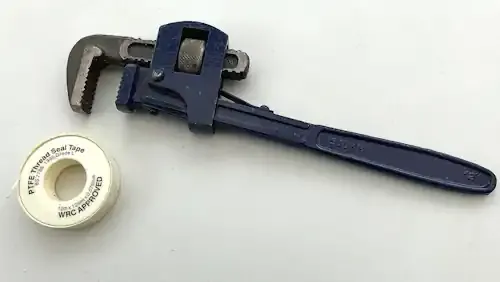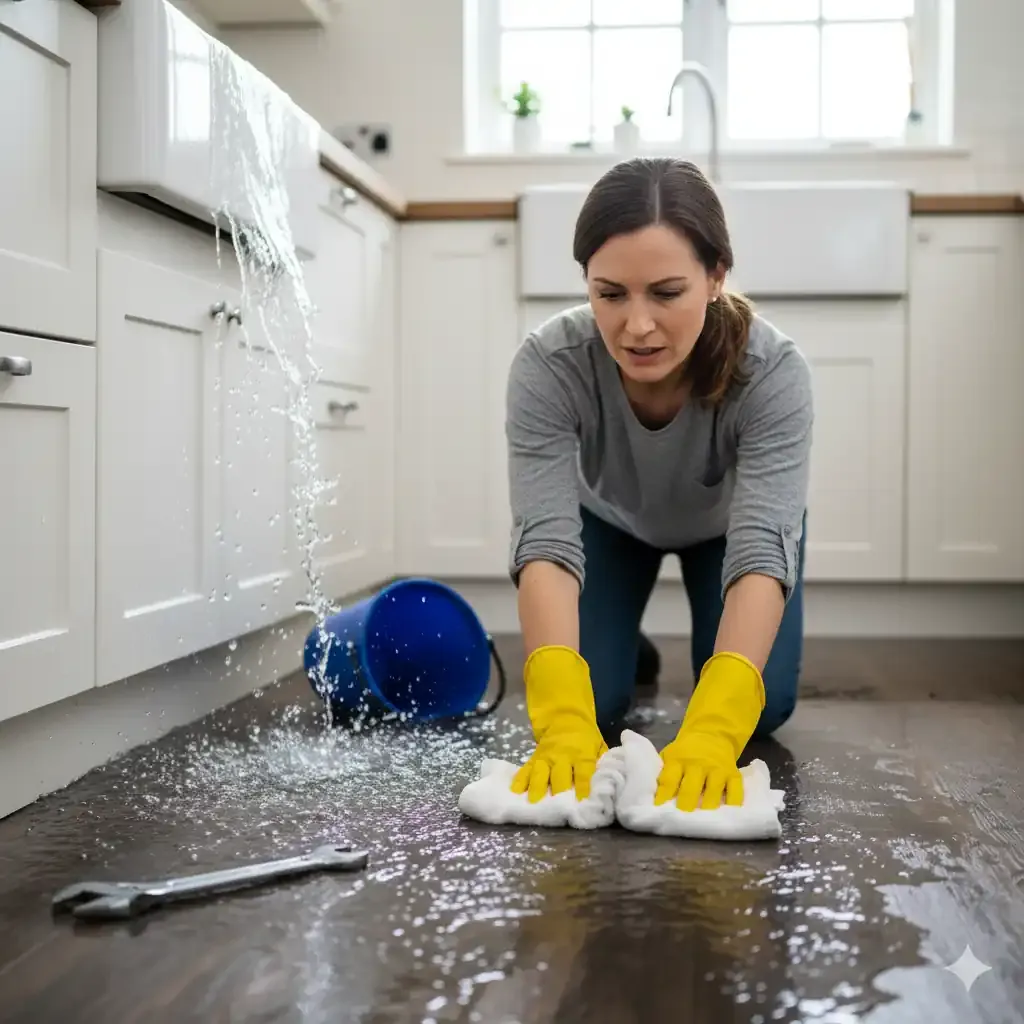How to Connect a Washing Machine Without Flooding Your Kitchen
Installing a washing machine might seem straightforward, but a small mistake can lead to big problems like a flooded kitchen, ruined flooring, or even costly water damage.
At Assett Plumbing, we’ve seen our fair share of DIY disasters, and we’re here to help you avoid them. Whether you’re replacing an old machine or setting up a new one, we break down the process into simple, manageable steps. No jargon, no confusion, just clear advice to keep your kitchen dry and to get your washing machine installed and running smoothly as quickly as possible.
Tools You’ll Need To Plumb A Washing Machine
Gather these basic tools and parts to save time and stress:
- Adjustable spanner – For tightening hose connections.
- Plumbing tape (PTFE tape) – To seal threaded fittings and prevent leaks.
- Bucket and old towels – For catching spills and drying drips.
- Spirit level – To ensure your machine sits evenly (won’t wobble during spin cycles).
- Hose connectors – Check if your machine needs ¾-inch or ½-inch hoses (most UK machines use ¾-inch).
- Inlet hoses – New machines often include these and can usually be found in the drum, but be sure to replace any old or cracked ones.
Pro plumber tip: Turn off your water supply at the stop tap (usually under the kitchen sink) before touching any water pipes!

Step 1: Check Your Existing Plumbing
Don’t skip this! Even a brand-new washing machine can flood your home if the pipes aren’t ready.
- Look for leaks: Inspect the water supply valves (where the hoses will connect). If they’re dripping or corroded, call a plumber to replace or repair them first.
- Test the drain pipe: Ensure the waste pipe (where dirty water drains) is clear and positioned higher than the machine’s drum to prevent backflow. A blocked or sagging pipe can cause floods and terrible smells!
- Measure the space: Leave at least 2–3cm between the machine and walls/cabinets to avoid vibrations damaging pipes.
Step 2: Connect the Hoses Properly
Mixing up hoses or tightening them incorrectly (cross threading) is the #1 cause of leaks.
- Cold vs. hot water:
- Most UK washing machines only need a cold water connection (as the machine will usually heat the water internally). However, if your machine has a hot hose, double-check your model’s instructions, and ensure you have both hot & cold water outlet pipes available close by.
- Attach the inlet hose:
- Wrap PTFE tape clockwise around the threaded end of the hose (3–4 layers).
- Screw the hose onto the cold water valve by hand first, then tighten gently with an adjustable spanner.
- Don’t overtighten as this can crack the valve!
- Secure the drain hose:
- Place the drain hose into the standpipe or sink waste pipe, often these are supplied with a plastic device that holds the hose and hooks over the waste pipe, however we’d also recommend you use a hook or clamp to keep it in place as the powerful waste water can make the pipe shift during operation (Do not use zip ties as they can slip!).
- The hose should curve upward slightly before it enters the waste outlet to stop dirty water flowing back into the machine.
Step 3: Avoid These Common Mistakes
Each of the below mistaked can be avoided with a little preparation and forethought, and prevention is always better than cure.
Mistake 1: Overtightening water hose connectors
- Fix: Only hand-tighten, then give a quarter turn with a spanner, but no more.
Mistake 2: Reusing old hoses.
- Fix: Frayed, brittle or stiff hoses burst easily. Replace them every 5 years (or sooner if you spot cracks).
Mistake 3: Ignoring the spirit level.
- Fix: An unlevel machine vibrates violently, shaking hoses loose. The feet will usually unscrew to heighten each corner of the machine, so adjust the feet until the bubble sits dead centre, if they do not, you may need to buy some small rubber or wooden chocks to level the washing machine.
Step 4: Test for Leaks (The Right Way)
Before you celebrate, test your work:
- Turn the water supply back on slowly.
- Run a short, empty cycle (use a “quick wash” setting).
- Check all connections including valves, hoses, drain pipe, and the door seal for drips or leaks. Wipe joints dry first to spot leaks easily.
- Look under the machine for any pooling water.
Uh-oh, there’s a leak?
- Turn off the water immediately.
- Tighten the connection slightly (but don’t force it). If it still leaks, the washer or valve may be faulty, and call an emergency plumber if you need help.
When to Call a Professional Plumber
Even confident DIYers should get help if:
- The stop tap is stuck or leaking (forcing it can snap the valve).
- Your home has old, corroded pipes that won’t seal properly.
- The machine keeps tripping the electrics (a sign of faulty wiring).
- You’re unsure about the drain setup (e.g., shared waste pipes causing blockages).
Washing Machine Checks to Prevent Future Floods
- Monthly: Inspect hoses for bulges or cracks.
- Yearly: Replace inlet hoses if they feel stiff.
- After holidays: Run a maintenance wash to clear lint from the drum.
Need A Local Plumber To Help?
At Assett Plumbing, we’re here for home and business owners across Northamptonshire. Whether you’re mid-DIY and stuck or want a pro to handle the job from start to finish. A small leak today can become a costly
plumbing emergency, so don’t hesitate to reach out if things get tricky, or just call if you need some advice.
Contact Assett Plumbing today on 01604 372395.
Stay dry, and happy washing!



